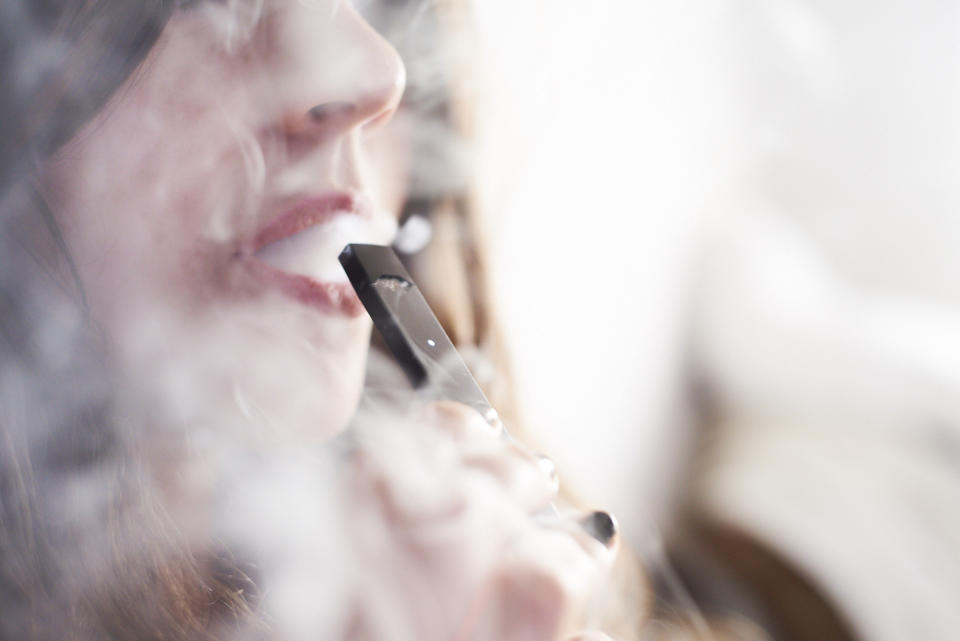Joe Camel illustrator: E-cig maker Juul's marketing 'seems more egregious'
When New York-based illustrator Jerry Lofaro was approached in the 1990s by an advertising firm working on tobacco company RJ Reynolds’ new Joe Camel campaign, he didn’t give it much thought.
His own beliefs hadn’t stopped him from crafting images for Coca-Cola or PepsiCo, and morally he felt much the same about the decision to help craft ads for what would later be investigated and scrutinized as an attempt by Big Tobacco to pander to children by using a cartoon camel to sell cigarettes.
“I never got a wink and a nod saying we’re targeting children — it was nothing like that,” Lofaro tells Yahoo Finance. “From my experience on the inside I was never given that message. In retrospect it’s easy to say maybe it was.”

But decades after RJ Reynolds paid millions of dollars to settle mounting pressure from the U.S. Food & Drug Administration and the cases brought against its questionable marketing practices, parallel questions are being asked of a newcomer to the space: $15 billion dollar e-cigarette startup Juul Labs. The company has come to control about 75% of the entire e-cigarette market and now notches about $1.5 billion in annual sales just three years after launching its Juul e-cigarette in 2015.
That meteoric growth has come at least in part, some say, by appealing to underage users. The company is now facing a class-action lawsuit in California that claims it targeted minors with its advertisements, and is also being investigated by the FDA and attorneys general in Massachusetts and North Carolina for similar reasons.
A ‘flawed’ ad campaign
At the heart of the concern, is a years-old marketing campaign that even Juul’s co-founders have admittedly labelled as “flawed.” The company’s colorful ads featuring young models vaping on Juuls were featured prominently on social media. That alone maybe wouldn’t be an issue, but the fact the company’s incredible rise following its campaign comes as e-cigarette use among teenagers spikes, it’s raising concerns at the highest levels of public health.

FDA Commissioner Scott Gottlieb called the phenomenon of teenagers vaping an “epidemic” just weeks before a separate Truth Initiative study found that underage teens were 16 times as likely to be Juul users than 25- to 34-year-olds. He also sounded the alarm on new National Youth Tobacco Survey data that showed use of e-cigarettes among high schoolers rose 75% from 2017 to 2018. Looking at the way Juul has been marketed online coupled with posts from social media influencers, it’s a consequence that didn’t surprise Lofaro.
“Just from a cursory overview with the weight of social media and getting a sense of the younger generation, to me the Juul [marketing] seems more egregious,” he said. “To me that really captures more of the essence of a young person’s mind than a cartoon character like Joe Camel ever could.”
But not everyone is convinced that the accusations against Juul carry as much weight as those raised against the Joe Camel campaign decades ago. As Dr. Michael Cummings, a professor at Medical University of South Carolina who has testified at over 150 tobacco-related trials, notes, intent was very hard to prove in the cases brought against RJ Reynolds, until messages sent between executives specifically mentioning underage users were uncovered.
“The cigarette companies actually wrote down and monetized the value of getting teens on cigarettes and that’s pretty evil,” he said. “And when they turned over those documents that was pretty damning -— I don’t know what you’ll find under the hood of Juul Labs.”

Whether or not any of the Juul documents seized by the FDA reveal anything about intent, it’s clear Gottlieb has become more outspoken against Juul and the other top e-cigarette manufacturers, which he gave until mid-November to come up with plans to curtail underage use.
“The FDA won’t tolerate a whole generation of young people becoming addicted to nicotine as a tradeoff for enabling adults to have unfettered access to these same products,” he wrote in a September press release.
E-cigs as a smoke cessation device
For its part, Juul Labs has shifted its marketing efforts away from its 2015 campaign to instead focus more on positioning its e-cigarette as a smoking cessation device. Packaging labels also now print the language “the alternative for adult smokers” to further drive the message home. A company spokesperson also downplayed the effectiveness of its past campaign by noting that sales didn’t start to increase exponentially until two years after its troubled ads were pulled.
The deadline for the leading e-cigarette manufacturers to provide plans to the FDA that might help curtail underage use is November 12. Juul Labs has been working closely with Iowa Attorney General Tom Miller, who was involved in arranging the $200 billion settlement with RJ Reynolds and other big tobacco companies in 1998 following the controversy sparked by the Joe Camel ad campaign. The company declined to provide further detail over what it might propose.
“Our plan will outline further actions we will take to keep the Juul device out of the hands of young people,” the company said in a statement following initial meetings with FDA officials. “We want to be part of the solution in preventing underage use, and we believe it will take industry and regulators working together to restrict youth access.”
Zack Guzman is a senior writer and on-air reporter covering entrepreneurship, startups, and breaking news at Yahoo Finance. Follow him on Twitter @zGuz.
Read more:
Juul surpasses Facebook as fastest startup to reach decacorn status